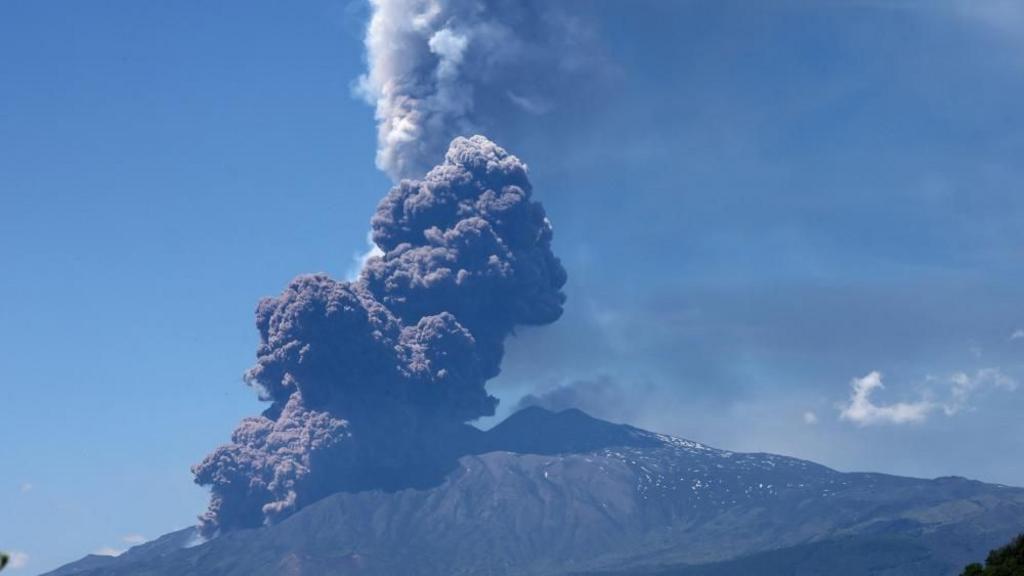Mount Etna, one of the world’s most active volcanoes, erupted on Monday morning, generating substantial plumes of ash and smoke visible from Sicily.
Visuals captured the volcanic material’s release. The National Institute of Geophysics and Volcanology (INGV) Etna Observatory reported a series of explosions of “increasing intensity” in the early hours.
While the eruption’s full extent remains unclear, disruption appears minimal. Etna’s frequent eruptions rarely cause significant damage or injury.
INGV data indicated the eruption originated on the volcano’s southeastern edge, near a known 200-meter-wide vent. Footage shows a pyroclastic flow—a fast-moving mixture of ash, gas, and rock—descending the volcano’s slope.
Geologists suggest a partial crater collapse may have contributed to this flow. Although pyroclastic flows pose inherent risks, no immediate threats have been reported.
INGV confirmed the volcanic material hadn’t surpassed the Valle del Bove, the point where tourist excursions terminate. Activity changes were initially registered at 00:39 local time (22:39 GMT), classified as an ongoing “Strombolian” eruption.
Strombolian eruptions, characterized by intermittent explosions due to gas in the magma chamber, vary in intensity. Gas release resembles the effervescence of a carbonated beverage, projecting material upwards.
Such eruptions pose risks to aviation. While an initial red alert potentially led to flight suspensions, it was subsequently downgraded.
Etna’s last significant eruption, in February, caused Catania airport to divert flights due to ash clouds, prompting warnings for tourists to avoid lava flows. Further details are available here.
The unrelated information in the original post regarding a missing hiker and unrelated sporting news has been removed to maintain focus on the Etna eruption.

